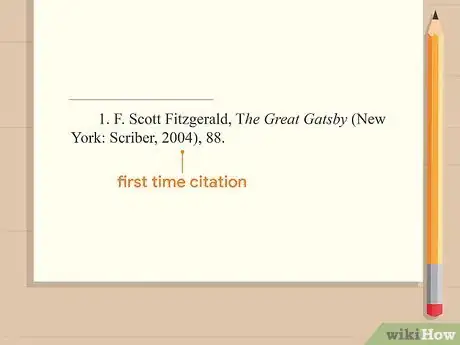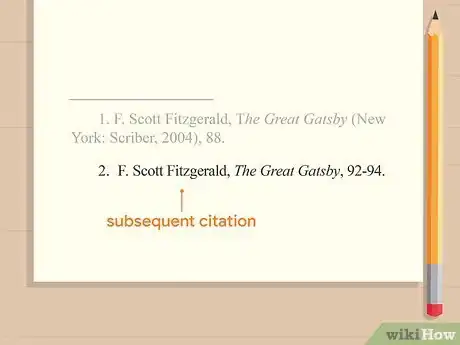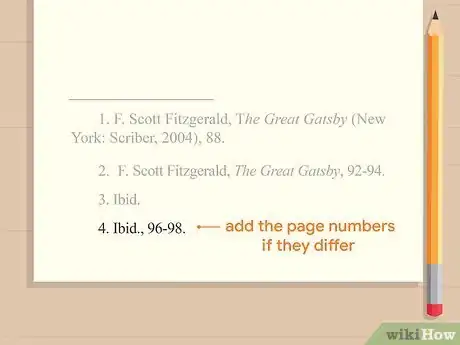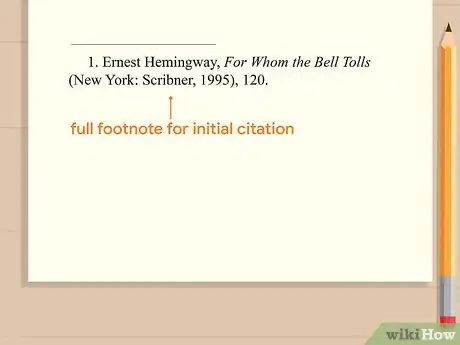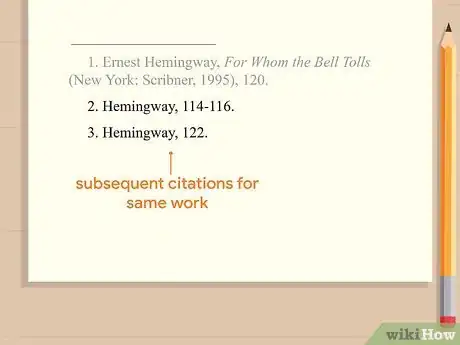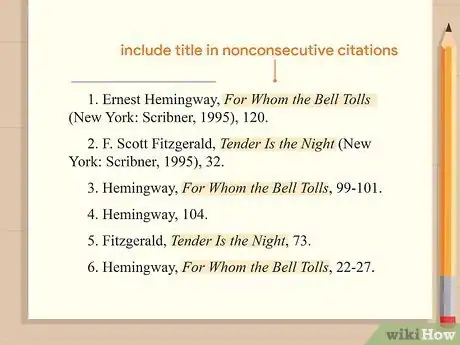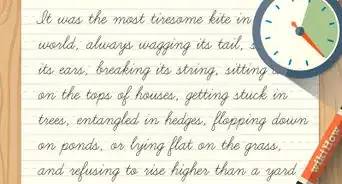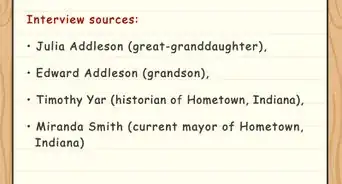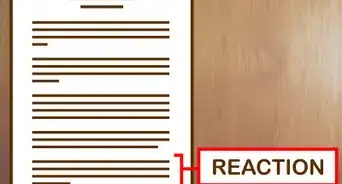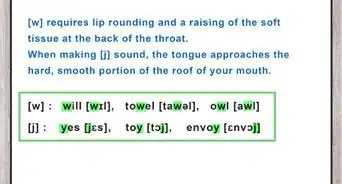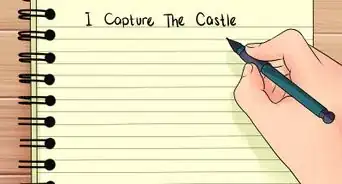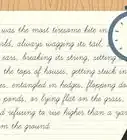This article was co-authored by wikiHow staff writer, Jennifer Mueller, JD. Jennifer Mueller is a wikiHow Content Creator. She specializes in reviewing, fact-checking, and evaluating wikiHow's content to ensure thoroughness and accuracy. Jennifer holds a JD from Indiana University Maurer School of Law in 2006.
This article has been viewed 16,792 times.
Learn more...
If you're writing a paper using the Chicago Method of Style (CMOS), you would typically have both footnotes and a bibliography. A full footnote contains the same information as your bibliography entry in a slightly different format along with the page numbers where the material referenced can be found in the source. However, if you're citing the same source 3 times or more in a row, you can use "ibid." (from the Latin "ibidem," which means "in the same place") instead of including any citation information other than the page numbers.[1] The 17th edition of CMOS, published in 2017, discourages the use of "ibid." since it can confuse readers accessing works in an electronic format. Discuss which method you should use with your instructor or editor.[2]
Steps
Citing the Same Source Consecutively
-
1Use the full footnote format the first time you cite a work. The first time you cite a work in your paper, place a superscript number at the end of the sentence and include a footnote with all of the same information that you have in your bibliography entry. However, in a footnote, you list the author's first name first and separate the elements of the citation with commas. The publication information is enclosed in parentheses. Add the page number or range to the end.[3]
- Example of full footnote format for a book: F. Scott Fitzgerald, The Great Gatsby (New York: Scriber, 2004), 88.
-
2Shorten the footnote format for any subsequent citations. After you've provided the publication information once, there's no need to include it again. If you cite the same source a second time, type the author's name and title, followed by the page number.[4]
- Example of shortened footnote format for a book: F. Scott Fitzgerald, The Great Gatsby, 92-94.
Advertisement -
3Cite to "Ibid." if you cite the source again consecutively. Use "Ibid." after the shortened footnote format if you cite to the same source a third time in a row. This tells your reader that you're still referencing the same work.[5]
- Example of consecutive citations:
1. F. Scott Fitzgerald, The Great Gatsby (New York: Scriber, 2004), 88.
2. F. Scott Fitzgerald, The Great Gatsby, 92-94.
3. Ibid.
- Example of consecutive citations:
-
4Add the page numbers if they differ from the shortened note. You need a footnote after every sentence in which you discuss, paraphrase, or quote a work. If you use "Ibid." by itself, you're directing your reader to the same page number or page range as the previous note. If the material you discussed in the subsequent sentence occurs on a different page, add the page numbers to let your readers know.[6]
- Example of consecutive citations with page numbers:
1. F. Scott Fitzgerald, The Great Gatsby (New York: Scriber, 2004), 88.
2. F. Scott Fitzgerald, The Great Gatsby, 92-94.
3. Ibid.
4. Ibid., 96-98.
Tip: Even if your paper will be in print form, make sure your use of "Ibid." won't be confusing to your readers. If your consecutive citations continue across two pages of your paper, you might want to include a shortened citation as the first footnote on the second page so your reader doesn't have to flip back.
- Example of consecutive citations with page numbers:
Using a Shortened Citation
-
1Create a full footnote for your initial citation. Shortened citations are only appropriate after you've already provided the full citation, including publication information, at least once. A full footnote includes all the same information as the bibliography entry, although it is formatted differently.[7]
- Example of a full footnote format for a book: Ernest Hemingway, For Whom the Bell Tolls (New York: Scribner, 1995), 112.
-
2Use only the author's last name and page number when citing a work just cited. If you're following the guidelines of the 17th edition of CMOS, you would replace both the intermediate step of a shortened citation and "Ibid." with a new shortened form. Simply type the author's last name followed by a comma, then the page number or page range where the material appears. Place a period after the page numbers.[8]
- Example of consecutive citations using shortened format:
1. Ernest Hemingway, For Whom the Bell Tolls (New York: Scribner, 1995), 112.
2. Hemingway, 114-116.
3. Hemingway, 122.
Exception: If you have 2 or more works by the same author, always include the titles in your shortened citations so your reader can differentiate.
- Example of consecutive citations using shortened format:
-
3Include the title in nonconsecutive shortened citations. Use the author and page number citation format only for works that you cite 2 times or more in a row. If there is an intervening note to a different work, provide the title as well. Different works by the same author would be considered intervening notes.[9]
- Example of nonconsecutive shortened citations:
1. Ernest Hemingway, For Whom the Bell Tolls (New York: Scribner, 1995), 120.
2. F. Scott Fitzgerald, Tender Is the Night (New York: Scribner, 1995), 32.
3. Hemingway, For Whom the Bell Tolls, 99-101.
4. Hemingway, 104.
5. Fitzgerald, Tender Is the Night, 73.
6. Hemingway, For Whom the Bell Tolls, 22-27.
- Example of nonconsecutive shortened citations:
References
- ↑ https://research.wou.edu/c.php?g=551307&p=3785494
- ↑ https://cmosshoptalk.com/2017/05/04/whats-new-in-the-cmos-17-citation-chapters/
- ↑ https://research.wou.edu/c.php?g=551307&p=3785494
- ↑ https://research.wou.edu/c.php?g=551307&p=3785494
- ↑ https://research.wou.edu/c.php?g=551307&p=3785494
- ↑ https://www.york.ac.uk/media/studenthome/academicintegrity/booklets2016updates/UoY%20Chicago%20Style%20Guide%202017.pdf
- ↑ https://guides.douglascollege.ca/chicago/shortened-citations
- ↑ https://cmosshoptalk.com/2017/05/04/whats-new-in-the-cmos-17-citation-chapters/
- ↑ https://guides.douglascollege.ca/chicago/shortened-citations
